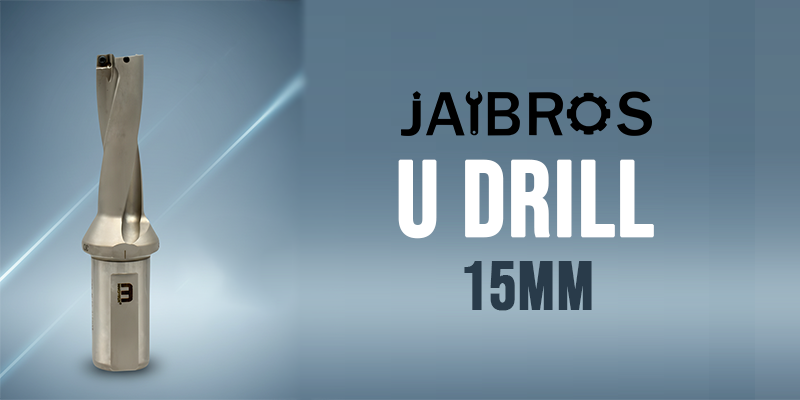U Drill Technology for Fast & Accurate CNC Drilling

Discover how modern U Drill technology improves drilling speed, accuracy, sizing, inserts, pricing, and CNC productivity for advanced metalworking operations.
U Drill Technology: The Future of Fast & Accurate Drilling
The manufacturing world is rapidly shifting toward automation, precision, and faster-cycle machining. As industries demand reduced downtime and improved surface finishes, tool selection has become a strategic advantage. One innovation leading this transformation is the U drill, a high-performance drilling solution designed to improve hole-making operations in CNC machining environments. Known for its ability to run at high feed rates with exceptional accuracy, this modern drilling tool is powering the next generation of metalworking productivity.
Why Drilling Technology Needed an Upgrade
Traditional twist drills have served machining applications for decades, but evolving materials and modern CNC capabilities require something more advanced. Hard alloys, deeper holes, complex tolerances, and mass production demand consistent performance—something conventional tools may not always deliver efficiently.
This is where the u drill stands out. With a stronger body, insert-based cutting system, and engineered coolant delivery, it drastically improves drilling quality and repeatability. Instead of taking multiple steps, machinists can now produce precise bores in a single fast, clean motion.
How a Drill Enhances Drilling Accuracy
Hole accuracy depends on three primary factors—tool rigidity, chip evacuation, and cutting-edge stability. The drill excels in all three areas. Its body is designed with optimized geometry to resist vibrations, helping maintain roundness and straightness throughout the cut.
Inserts distribute cutting loads efficiently, resulting in cleaner walls and improved surface finish. With engineered tool paths and carbide edges, the cutting process becomes smoother, requiring fewer post-machining operations. That means reduced rework and improved dimensional control.
Manufacturers working with demanding materials such as stainless steel, cast iron, or titanium especially benefit from switching to a drill, as it maintains accuracy without excessive tool wear.
The Role of Inserts in Performance Enhancement
One major technological advantage comes from the use of a u drill insert. These inserts are replaceable, which eliminates the need to dispose of dull drills or invest time in regrinding. Instead, machinists simply change inserts and continue machining—keeping production uninterrupted.
Different coating and carbide grades allow adaptability across metals, helping enhance tool life and reduce heat buildup. With the right U-drill insert, users can achieve faster machining speeds while maintaining consistent performance and lower cost per component.
Selecting the Right Drill for Your Application
Choosing tooling isn’t just about machine compatibility—it also requires considering material hardness, hole depth, required tolerance, and surface finish. For systematic comparison, most manufacturers rely on the U-drill size chart, which outlines recommended diameters, drilling capacity, RPM ranges, and insert compatibility.
The U drill size chart plays an important role in planning CNC jobs, avoiding mismatched tooling, and improving setup efficiency. By referencing it before machining, operators ensure maximum productivity while extending tool life.
Understanding U Drill Sizes in CNC Machining
Before setup, machinists must select the correct u drill size based on hole requirements and machine spindle capacity. Choosing a diameter too large may cause chatter, while selecting one too small may increase cycle time. Proper selection of u drill size ensures stability, chip evacuation, and safe cutting throughout the drilling operation.
When paired with adequate coolant pressure and proper feed recommendations, sizing accuracy directly improves part quality.
Cost Comparison: Is a U Drill Worth It?
Tooling investment often concerns CNC workshop owners, especially small and mid-scale units. The u drill price may appear higher initially compared to regular twist drills, but long-term ROI tells a different story.
Because inserts can be replaced independently, the overall drill price becomes cost-effective over time. Less tool replacement, reduced downtime, better cycle times, and fewer scrap parts all contribute to increased profitability. For high-volume machining, the savings are even greater.
Why Drill Technology Represents the Future
Manufacturing competitiveness depends on output quality, cycle time, and per-part cost. The drill directly contributes to all three. Its ability to maintain performance at high feed rates helps manufacturers meet rising production demands without upgrading machinery.
As automation, AI-driven machining, robotic integration, and Industry 4.0 expand, future CNC systems will require tools capable of predictable, repeatable performance—and Drill technology delivers exactly that.
Conclusion—Modern Drilling Requires New Tools
Innovations in drilling equipment are changing how manufacturers around the world drill their products. Although traditional drilling methods can serve well for simple operations, businesses seeking to maximize speed, accuracy and efficiencies while minimizing costs will continue to turn to the technology of U drills. The combination of new technology and insert technology creates an exceptional U drill that meets today’s manufacturing requirement of speed and accuracy.
Jaibros has consistently provided high-quality tooling solutions and has gained a significant following throughout many different industry sectors. From providing quality performance to accurate insert sizes and always having the right tool, Jaibros is committed to providing a high-quality drilling experience and helping our customers achieve their drilling goals.
FAQs
1. What makes a Drill better than a regular twist drill?
A U Drill offers higher feed rates, smoother chip removal, and improved accuracy due to its rigid body and insert-based cutting system.
2. Can a Drill be used on different materials?
Yes, with the right insert grade and coolant setup, it performs efficiently on steel, cast iron, aluminum, and hardened alloys.
3. Do U Drills require high-power CNC machines?
Not always—most modern CNC lathes and mills can run them, provided they meet torque and coolant requirements.
4. How often do U Drill inserts need replacement?
Insert life depends on material hardness, cutting conditions, and machining volume, but replacements are quick and economical.
5. Is transitioning to a Drill cost-effective for small workshops?
Yes—reduced cycle time, fewer tool changes, and better hole quality often justify the investment.






